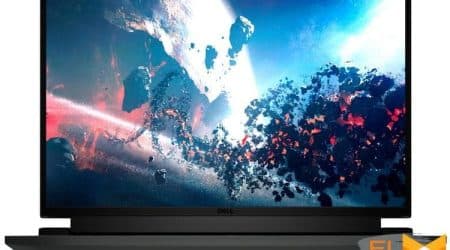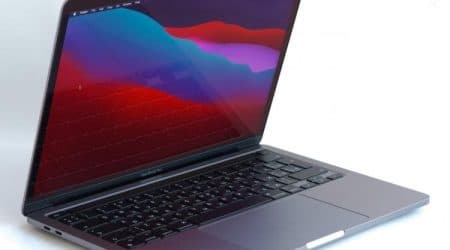


As we move deeper into the digital age, laptops’ reliability has become increasingly critical. They are not just workstations or entertainment hubs anymore; they are our links to the virtual world, a source of knowledge, resources, and connection. Hence, it becomes crucial to comprehend and respect the limits of these high-tech devices, a primary concern being their temperature tolerance. The focus of this article is particularly on a laptop’s ability to withstand cold temperatures, factoring in the lower end of the spectrum.
Electronic devices like laptops, while designed to endure a range of conditions, have specific safety and operational guidelines to warrant their longevity. These parameters include optimal temperature ranges, specifically the minimum temperature at which they can function correctly. When temperatures drop below this ‘safe zone,’ several issues can arise, disrupting the device’s stability, performance, and overall lifespan.
This discussion will provide a comprehensive look into how low temperatures affect a laptop’s functionality. We will delve into the scientific reasons behind this, explore the potential risks of prolonged exposure to such conditions, and equip you with understanding and strategies to safeguard your device. It is of noteworthy mentioning that, while these gadgets have been designed to survive in varying environmental conditions, measures to ensure their protection are still very relevant and not to be overlooked.
Understanding the Minimum Cold Temperature a Computer Can Manage: Tips For Keeping Your Device Safe In Cold Environments
A recurring concern for laptop users, particularly those in cooler climes, is understanding the minimum temperatures their devices can handle. Laptops, like other devices, are not built for extremes, but how cold is too cold? Below zero conditions can be more than just uncomfortable; they can significantly impact your laptop’s performance and even cause damage.
It’s important to remember that every laptop comes with its own specific set of temperature ranges for both operating and non-operating conditions. While operating ranges are typically straightforward – generally between 50°F to 95°F (10°C to 35°C), it’s the non-operating, or ‘storage’, range where the below zero issue comes up.
A rule of thumb is not to expose your laptop to conditions outside its stated safe temperature ranges, though these may vary from brand to brand.
Maintaining Device Safety in Below Zero Conditions
While it’s clear that most laptops can withstand temperatures just under freezing when not in use, they should not be powered on or used in these conditions. In cold circumstances, the main issue is condensation. When you bring a cold laptop into a warm room, moisture can form and cause potential damage on sensitive components. Moreover, LCD panels can freeze and batteries can lose capacity.
- Ensure gradual temperature changes: When exposing a laptop to low temperatures, make sure the transition is gradual. This principle applies while warming it up as well. A sudden switch can cause condensation inside the device, which might be detrimental to its components.
- Protect the battery: Laptop batteries, especially those of the lithium-ion type, are sensitive to cold temperatures. The battery capacity can drop in the cold, thereby reducing the runtime. Keep the battery at room temperature whenever possible.
- Wait before powering up: If your laptop has been in a cold environment, give it time to adjust to room temperature before turning it on. This allows any possible condensation to evaporate, reducing the risk of internal damage.
In essence, handling laptops in cold conditions requires a good knowledge of the device specifications and awareness to prevent damage. With the right care, your laptop should be able to weather the chill without harm.
Comprehending the Range of Safe Temperatures for Your Notebook
Every laptop has operational limits when it comes to temperature. By understanding these limitations, you can ensure your device functions optimally and averts potential damage.
Operating Temperature of Laptops
Most notebooks are designed to operate within a specific temperature niche. While specifics can vary by brand and model, it’s generally safe to say that the optimal range for most laptops falls between 50 and 95 degrees Fahrenheit (10 to 35 degrees Celsius). This is referred to as the comfort zone wherein the system performs best without risk of internal damage.
Keep in mind that extreme cold can be as damaging as extreme heat. Confronting sub-zero temperatures, your laptop’s display could malfunction, the battery could deplete quickly, and the hard drive might fail.
- If the heat goes uncontrolled, your laptop can suffer high-temperature damage such as system crashes, battery failure, and in severe cases, melting of internal components.
- When confronted with temperatures close to freezing or below it the device will face similar risks. Components could slow down or malfunction, condensation could develop leading to a short-circuit, or the battery might discharge.
There’s sometimes confusion about laptop warming laptops are expected to warm up when tackling heavy tasks or used for an extended period. But be cautious of ‘overheating’. Signs of overheating include severe heat coming from the base of the laptop, noisy fan, and system slow down or crashes.
How to Maintain Temperature Control
A proactive approach to managing your laptop’s temperature can help extend the lifespan of your device. Here are some pointers to optimize your device’s thermal performance:
- Keep vents clean and unobstructed
- Use on a hard, flat surface. Avoid soft surfaces like beds and sofas
- Consider laptop cooling accessories
- Ensure proper room temperature
- Regularly update your system and shut down when not in use
In conclusion, knowing and respecting the safe temperature limits for your laptop helps protect your investment and ensures you get the best out of your device.
The Effect of Extreme Cold on Laptop Efficiency
Operating laptops in chilly environments potentially leads to hardware damage and impacts overall device performance. Taking your laptop outdoors in freezing degrees can lead to abrupt performance issues and long-term tech health problems.
The Consequences of Cold Temperatures on Laptop Devices
One of the first casualties of freezing conditions are a laptop’s battery life. Battery chemistry can be sensitive to low temperatures, and performance can degrade significantly in the cold. This is primarily because low temps can slow down the chemical reactions within the battery, resulting in less power being available for use.
All electronic devices, laptops included, rely on electrical currents to function. Extreme cold can alter the resistance levels within circuits, changing how electricity flows. This can often lead to your laptop acting in unexpected ways or even data loss. The LCD screen too, is likely to function erratically or go dim in low temperatures.
Additionally, laptops, like many other electronic devices, generate heat when they are in use. This is because electricity generates heat when it moves through resistance. Laptops have heat dissipation systems designed to maintain optimal operational temperatures. However, in extreme cold, these systems can be less effective, making it challenging to reach those optimal temperatures, which can also lead to poor performance.
- Running software applications while your device is below the recommended operating temperature might result in slower response times and reduced functioning
- Laptops exposed to extremely cold temperatures might take a longer time to boot up or could potentially fail to turn on at all
Understanding the impacts of cold temperatures on laptop performance is essential. It helps users to take necessary precautions to avoid any potential damage or loss in performance. Therefore, it’s preferable to avoid using laptops in freezing conditions whenever possible, and always give the device time to warm up to room temperature before use if it has been exposed to cold temperatures.
Understanding the Role of Materials and Parts in Laptop Resistance to Cold Conditions
Understanding how laptop components and materials respond to extreme cold is important in maintaining the longevity of your device. Most laptops can function effectively at temperatures slightly below freezing, usually in the range of 0 degrees Celsius (32 degrees Fahrenheit) to -10 degrees Celsius (14 degrees Fahrenheit). But beyond this threshold, various factors come into play.
In particular, the laptop structure and the materials making up the essential parts play a crucial role in determining the minimum functional temperature. For instance, the sensitivity to cold differs significantly according to the type of material, whether metal, plastic or a fusion of the two.
At extremely low temperatures, conductive materials such as those used in the computer circuit may contract, interfering with the device’s electrical conductivity. The electronic components, including the motherboard, hard drive and battery, are designed to work within certain temperature ranges which, if surpassed, can lead to poor performance or failure.
Significant Components & Reactions to Cold
In freezing conditions, the hard drive can cease to operate, as the lubricants that ensure read-write head movement freeze, causing the hard drive to fail. The screen, particularly LCD displays, can lose their crispness due to the slowing down of liquid crystals.
Excessive cold can also negatively impact your battery. Batteries produce power through a series of chemical reactions, which can be inhibited by low temperatures, significantly reducing the laptop’s battery life.
The processors and the connected cooling system may not function efficiently as low temperatures can make controlling the heat dissipation difficult, which might lead to overheating and even shutdown.
Materials such as plastic can become more fragile and, in extreme cases, crack in intense cold, while metals might contract, putting undue stress on the device’s structure.
In conclusion, various materials and parts that constitute a laptop react differently to cold, and being aware of these reactions can help protect your device in freezing conditions.
Understanding the Impact of Cold Weather on Laptop Batteries
One area of concern when it comes to using a laptop in extremely cold environments is the device’s battery. Just as the minimum temperature that a laptop can tolerate influences its functionality, it affects the performance and lifespan of the battery as well.
How low temperatures affect laptop batteries
Generally, lithium-ion batteries found in laptops perform best at room temperature. When exposed to extreme cold, the chemical reactions within the battery slow down, leading to a decreased battery life and performance. In other words, your laptop’s power storage capacity may decline if it is used for prolonged periods in sub-zero conditions.
Moreover, when a cold battery is suddenly exposed to a warmer environment, condensation may form inside, leading to potential damage. Therefore, it is highly recommended to let the laptop gradually reach room temperature before turning on.
Strategies for below-freezing laptop battery safety
- Do not leave your laptop in a cold environment for an extended period of time. If necessary, insulate it with protective gear.
- Allow your laptop to warm up naturally before turning it on after it has been exposed to cold conditions. This can help to prevent internal condensation.
- Keep an eye on battery life. If your laptop is continuously losing power quickly, it may be due to the cold.
- Carry extra batteries if you know youre going to be out in the cold for an extended period.
Understanding the impact of cold conditions on your laptop’s battery can help you take the necessary precautions to maintain its longevity and ensure the safety of your device. After all, your laptop is a reliable companion for work or entertainment, and it deserves care, no matter the weather.
Understanding Computer Chilling Mechanisms and How They Bear Subzero Conditions
The key to grasping how a laptop copes with frosty weather lies in understanding its cooling framework. As opposed to desktop computers, which have more positioning flexibility and therefore more spacious cooling systems, laptops utilise compact cooler setups due to stringent size constraints. As such, laptops have systems tailored for handling high temperatures, primarily coming from the Central Processing Unit (CPU) and the Graphics Processing Unit (GPU).
Effect of Frigid Temperatures on a Laptop’s Cooling System
Given that a laptop’s cooling mechanism is designed to lower temperature, one could easily presuppose that freezing weather is beneficial. However, this is not necessarily true. The technology used in laptops is not built to withstand extremely low temperatures. In fact, regimens below freezing point might cause harms analogous to overheating issues. Expensive components, such as the display, hard drive, and battery, may fail to function in such environments or worst case, suffer severe damage.
Material Properties in Cold Environments
Subzero conditions can induce changes in the physical qualities of materials. Laptop components, for instance, can contract or become brittle under extreme cold, resulting in a disruption of the laptop’s operation or permanent harm. Furthermore, the lubricants used in the cooling system could thicken or even freeze, rendering the fans useless and causing the CPU and GPU to overheat, despite the cold surroundings.
- Display: LCD displays, which are popular in laptops, contain liquid crystals that can freeze and crack in truly frosty conditions, ruining the display.
- Battery: Lithium-ion batteries, the most common type in laptops, may fail to work or deliver reduced performance in below freezing temperatures.
- Hard Drive: Mechanical hard drives can cease to function or suffer damage in cold weather since lubricants used in their mechanisms may thicken or freeze. Solid-state drives, on the other hand, are less susceptible to this issue.
Preventing your laptop from reaching subzero temperatures is crucial for maintaining its functionality and longevity. It’s always safer to keep it in a heated room and never leave it in a car overnight during winter.
Comparing Commercial and Rugged Laptops in Terms of Lowest Temperature Tolerance
When it comes to the issues of lowest temperature tolerance or how resistant a laptop is to extremely cold conditions, there are crucial disparities to note between commercial laptops and rugged laptops. These differences become more pronounced in sub-zero temperatures, thus affecting the safety of these devices.
Commercial Laptops
Typically, commercial laptops are designed for moderate indoor environments with average temperature ranges. They are not built to endure cold weather conditions. When exposed to cold temperatures, commercial laptops may show noticeable changes in performance. The liquid crystal display (LCD) can freeze, rendering the screen unreadable. Hard drives may also become slow or unresponsive due to the reduced lubrication on the disk surface. In some extreme cases, the lithium-ion battery can fail completely in cold conditions. On average, commercial laptops are safe to work within the temperature range of 50°F – 95°F (10°C – 35°C).
Rugged Laptops
On the contrary, rugged laptops, also known as hardened or robust laptops, are specially engineered to operate effectively in extreme environmental conditions. Their design typically features shock-absorbing properties, with solid-state drives replacing the standard hard drives. The LCDs of rugged laptops are built with internal heaters to prevent freezing, thus ensuring a readable display even in sub-zero temperatures. The lithium-ion batteries of these devices are usually fitted with internal insulators to maintain their performance in the cold. It’s not unusual to find rugged laptops that can function optimally at temperatures as low as -20°F (-29°C).
In conclusion, the build and function of a laptop determine its ability to withstand low temperatures.
How to Safeguard Your Laptop When Using it in Cold Conditions
When working in frigid conditions, extra care needs to be taken in the usage of laptops. These devices carry electronics that can succumb to the harsh elements. Here are some tips to keep your equipment functioning properly and safe from damage.
Temperature Adaptation
It is often not discussed, but laptops may go through a crucial operation phase when exposed to temperatures below zero. As a result, the path to a safeguarded laptop usage in extremely cold conditions begins with allowing your laptop to have time to adapt to the lower temperature. It means allowing it to rest in cold condition for some time before switching it on. Ignoring this might could lead to serious internal damage.
Guard Against Condensation
It’s not just the cold that can harm your laptop but also the humidity. A major concern when using laptops in cold environments is condensation. When a laptop is exposed to a sudden temperature shift, it can cause moisture to build up, leading to condensation which can be detrimental to electronic components. To avoid condensation, avoid sudden changes in room temperatures especially if you’re carrying your device from a warm room to the outdoors and vice versa.
Keep the Battery Warm
The cold can have a negative effect on your laptop’s battery life. Cold temperatures slow down the chemical reactions inside the battery, reducing its efficiency. To avoid this, try to keep your laptop as warm as possible when not in use. This can be achieved by storing it in a well-insulated bag or case when not in use.
- Never leave your laptop in a car in cold weather, as it may get too cold and suffer damage.
- Never store your laptop in freezing temperatures. If it gets too cold, it may not boot up again.
- Try to keep your laptop at room temperature whenever possible.
In conclusion, it’s important to consider these precautions when using a laptop in cold environments. Doing so will not only ensure the longevity of your laptop but can also prevent costly repairs or replacements down the line.
Strategies for Safeguarding Your Portable Computer in Intense Cold Conditions
Exposing your portable computer to very cold weather can potentially damage its components and impact its performance. Here are some essential tips to ensure your laptop is shielded from extreme cold temperatures.
1. Avoid Rapid Temperature Fluctuations: Rapid changes in temperature can cause condensation inside your laptop, which may lead to internal damage. Always allow your device to gradually adjust to room temperature before switching it on.
Storage and Transportation Tips
- Use Insulated Laptop Bags: An insulated laptop bag helps in maintaining a stable temperature. Choose options that have several layers of insulation to protect your device from cold.
- Turn Off Before Going Out: Always make sure your laptop is fully shut down before venturing outside in cold temperatures. This is critical as operational components generate heat, and the sudden exposure to chill can cause system shock, leading to potential harm.
- Avoid Leaving The Laptop in The Car: If you have to leave your laptop in your car in cold weather, make sure it is off and stored securely in an insulated bag.
Efficient Usage and Maintenance Tips
The following pointers can help maintain the efficiency of your laptop when operating in a cold environment.
- Operating Environment: Try to use the laptop in a slightly warmer and controlled environment. If you’re in a cold room, do not place your laptop directly on cold surfaces. Placing it on a rug or a mouse pad can provide some thermal protection.
- Update Software: Keep your laptop’s software updated. Some updates specifically target system efficiency which can be crucial in extreme weather.
- Keeping System Dust-Free: Dust can deter your laptops ability to vent and maintain optimal internal temperatures. Regularly cleaning vents can help maintain efficient heating.
In conclusion, safeguarding your laptop from cold weather requires adjustments in storage, transportation and usage habits. Following these guidelines can keep your device functioning optimally, even under intense cold conditions.
Recognizing and Addressing Damage from Sub-Zero Temperatures on Laptops
Operating a laptop in extremely cold weather, commonly referred to as sub-zero conditions, can lead to severe damage. The signs differed, the most common including hardware malfunction, reduced battery life, and poor device performance. Recognizing these symptoms promptly can make a significant difference when it comes to seeking professional repair services.
Hardware Malfunction
Drastic temperature changes can lead to condensation inside your device, leading to hardware malfunction. Sub-zero temperature operation may exhibit symptoms like random shutdowns, keyboard non-responsiveness, and glitches on the display screen. It’s critical to turn off the laptop and hire a professional repair service as soon as possible when these symptoms are visible.
Battery Life Reduction
One of the salient signs of low temperature damage is a sudden change in battery life. Laptops operating in freezing conditions might experience a rapid power drain, struggling to sustain charge longevity. Consequently, it hints at possible battery or internal hardware damage, necessitating immediate professional attention.
Decline in Overall Performance
A noticeable decline in your laptop’s overall performance is another telltale sign of frost damage. This decline can manifest as slower processing speeds, more frequent freezing, and longer boot-up times. These issues can be symptomatic of more serious internal hardware damage.
Seeking Professional Repair
Under no circumstances should you attempt to repair a frost-damaged laptop on your own. Not only does this risk further damage, but also voids any existing warranties. Thus, promptly recognizing the signs of frost damage and seeking professional help is critical to safeguard your device from irreparable damage.
FAQ What is the lowest temperature a laptop can handle:
Why is it important to keep your laptop within the manufacturer’s recommended temperature range?
Keeping your laptop within the manufacturer’s recommended temperature range is crucial to avoid damage to internal components, as extreme cold or heat can adversely affect the laptop’s functionality and longevity.
How can cold temperatures damage your laptop?
Cold temperatures can cause contraction in the internal components of your laptop, potentially leading to physical damage. Furthermore, batteries can lose efficiency, and LCD screens may fail to display correctly.
What are effective ways to protect your laptop from exposure to cold?
To protect your laptop from cold, use a padded laptop case, avoid leaving it in cold environments for extended periods, and let it warm up to room temperature before booting up if it has been in a cold environment.
How can rapid temperature changes affect my laptop?
Rapid temperature changes, such as moving a laptop from a cold environment to a warm one, can cause condensation inside the laptop, potentially leading to short circuits or other electrical issues.
Can cold weather damage your laptop while traveling?
Yes, cold weather can damage your laptop, especially if it is left in a car or other unheated area where the temperature has dropped below freezing, as the cold can affect the battery life and LCD screen.
What is the best way to protect your laptop when bringing it in from the cold?
When bringing your laptop in from the cold, allow it to reach room temperature before turning it on to prevent any condensation inside the laptop. Also, ensure the laptop is dry and free from any moisture.
How can a laptop case help keep your laptop warm?
A laptop case can provide insulation, helping to maintain a stable temperature and protect the laptop from sudden temperature changes when moving between different environments.
What should you do if your laptop is left in freezing conditions?
If your laptop is left in freezing conditions, let it warm up slowly to room temperature before using it. Do not apply direct heat or keep a laptop near a heater, as rapid warming can cause damage.
How can you ensure your laptop works within a safe temperature range?
To ensure your laptop works within a safe temperature range, avoid exposing your laptop to extreme cold or heat, monitor the usage temperature of the outside environment and the temperature inside your laptop, and use it within a specific temperature range as advised by the manufacturer.
Are there any precautions to take when using your laptop after it has been in a cold environment?
After your laptop has been in a cold environment, it’s important to let it adjust to room temperature before turning it on. Check for any condensation and make sure the laptop is dry. Using the laptop while it is still inside a laptop bag that’s cold can lower the effective temperature even further, potentially causing damage.
Why is it important to keep the laptop warm in cold temperatures?
Keeping the laptop warm in cold temperatures is important because extreme cold weather can negatively affect its battery life, LCD display, and other internal components not designed to handle very low temperatures.
How can cold air impact a laptop’s performance?
Cold air can cause internal components of a laptop to contract, which might lead to physical damage. Additionally, cold temperatures can also affect the efficiency of the battery and the responsiveness of the LCD screen.
What are some effective ways to protect your laptop from extreme cold?
To protect your laptop from extreme cold, keep it in a padded case, avoid leaving it in cold environments for prolonged periods, and gradually bring it to room temperature before use to prevent condensation.
How can you ensure that your laptop stays within a temperature range it is designed to handle?
To ensure your laptop stays within a temperature range it is designed to handle, avoid exposing it to extreme weather conditions, and consult the manufacturer’s guidelines for the optimal operating temperature range.
What should you do if you need to leave a laptop in a car during cold weather?
If you need to leave a laptop in a car during cold weather, ensure it’s turned off, well-insulated in a laptop bag or case, and try to minimize the time it is exposed to the cold to protect it from extreme temperatures.
Can exposing a laptop to cold temperatures cause permanent damage?
Exposing a laptop to extreme cold temperatures for an extended period can cause permanent damage to its battery, screen, and other components that are not designed to handle such conditions.
What are the risks of using a laptop immediately after bringing it in from the cold?
Using a laptop immediately after bringing it in from the cold can lead to condensation forming inside, which may cause electrical shorts or corrosion, potentially damaging the laptop.
How can you keep a laptop warmer in a cold environment?
To keep a laptop warmer in a cold environment, use it in insulated areas, keep it in a protective case when not in use, and avoid exposing it to direct cold air or leaving it in unheated areas.
Is it advisable to leave your laptop in cold environments like a garage or an unheated room?
It’s not advisable to leave your laptop in cold environments like a garage or an unheated room, as prolonged exposure to low temperatures can harm its internal components and reduce its overall functionality.
What steps can be taken to protect your laptop and ensure its longevity in cold weather?
To protect your laptop and ensure its longevity in cold weather, keep it at a stable temperature within its designed range, gradually warm it up to room temperature before use, and avoid rapid temperature changes that could cause condensation.





